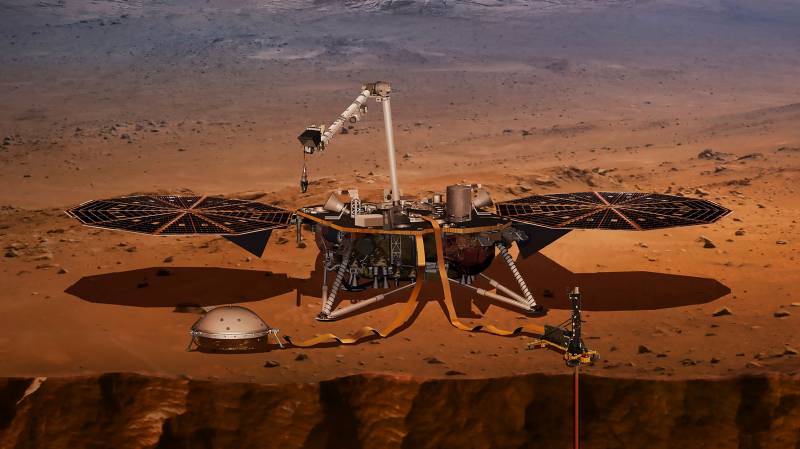Trembling Mars gives up more seismic secrets

Stay tuned with 24 News HD Android App

Mars is a constantly tremoring "living" body, researchers said Monday as they unveiled measurements of seismic activity on the red planet showing similar tremble rates to Earth or the Moon.
For 15 months NASA's InSight robot craft scoured the surface of Earth's neighbour, and measured hundreds of so-called "Marsquakes". These included several tremors that contained the same frequency patterns as tremors caused by the movement of Earth's own tectonic plates.
"This is the first mission focused on taking direct geophysical measurements of any planet besides Earth, and it's given us our first real understanding of Mars' interior structure and geological processes," said Nicholas Schmerr, an assistant professor of geology at the University of Maryland and a co-author of the study in Nature Geoscience.
Another team of researchers found that at least 20 of the quakes measured by the InSight lander had the equivalent strength of a magnitude 3-4 earthquake. After a six-and-a-half-month voyage through 480 million kilometres of space, the NASA probe landed on Mars' Elysium plain in November 2018, pressing an ear to the planet for the first time.
Mars had long been thought to be seismically active, but the InSight lander gave scientists proof of consistent and occasionally powerful tremors.
Windy planet
While the studies show at least 170 tremors measured over 225 days, the quakes have continued to the present day, according to Philippe Lognonne, a researcher at Paris' Institut de Physique du Globe, part of the 500-strong international team working on InSight.
He said at least 460 events had been picked up by InSight's instruments. Charles Yana, project chief of the InSight monitoring system at the French Cnes space agency, said that the frequency of seismic activity was "pretty surprising as the models hadn't predicted so many."
InSight is also providing data to scientists about Mars' weather patterns, its atmosphere, geology and magnetic field. The probe has even established a daily profile of wind strengths on the red planet.
During the day, heating from the Sun causes wind to build, reaching its peak in late afternoon. By evening, the wind is gone and there is silence on the surface.
For Schmerr, "understanding these processes is part of a bigger question about the planet itself. Can it support life, or did it ever? Life exists at the edge, where the equilibrium is off," he said. "Think of areas on Earth such as the thermal vents at the deep ocean ridges where chemistry provides the energy for life rather than the Sun."
A key mystery of Mars remains unresolved, however -- whether or not its core is still liquid, like Earth's. "If it turns out there is liquid magma on Mars, and if we can pinpoint where the planet is most geologically active, it might guide future missions searching for the potential for life," said Schmerr.
